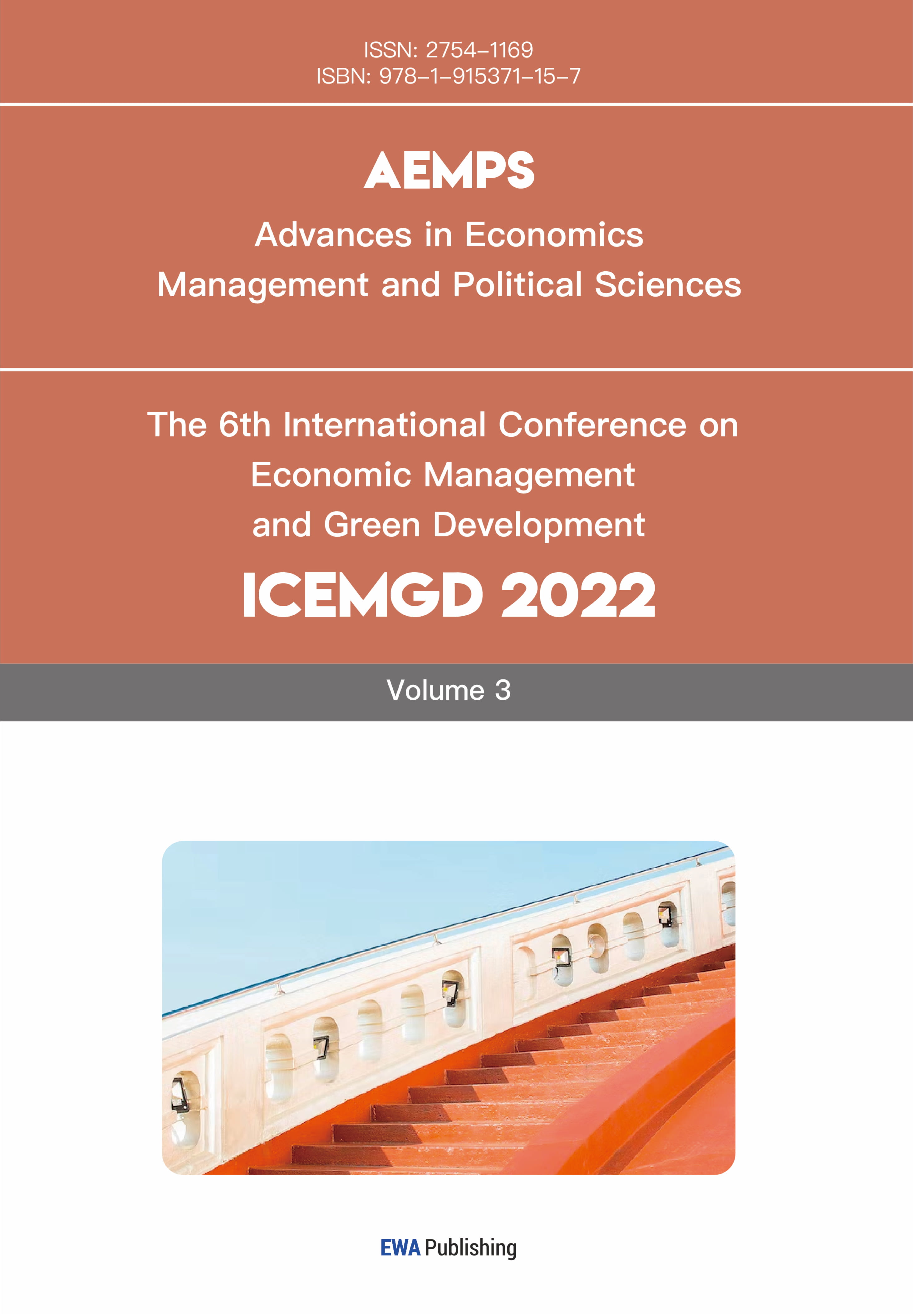References
[1]. Stoll, H.R. and Curley, A.J. (2009). Small Business and the New Issues Market for Equities. The Journal of Financial and Quantitative Analysis, 5(3), p.309.doi: https: //www.cambridge.org/core/journals/journal-of- financial-and-quantitative-analysis/article/small-business-and-the-new-issues-market-for-equities/6FB64DA41CF0DA103D86ADE4318B0139
[2]. Lizińska, J. and Czapiewski, L. (2014) 'Performance of Polish IPO firms: Size and profitability effect, ' Gospodarka Narodowa, 269(1), pp. 53–71. https: //doi.org/10.33119/gn/100877.
[3]. Neupane, S. and Poshakwale, S.S. (2012). Transparency in IPO mechanism: Retail investors’ participation, IPO pricing and returns. Journal of Banking & Finance, 36(7), pp.2064–2076. Doi: https: //doi.org/10.1016/j.jbankfin. 2012.03.010.
[4]. Aggarwal, R., Prabhala, N.R. and Puri, M. (2002). Institutional Allocation in Initial Public Offerings: Empirical Evidence. The Journal of Finance, 57(3), pp.1421–1442. doi: https: //doi.org/10.1111/1540-6261.00465.
[5]. Benveniste, L.M. and Spindt, P.A. (1989). How investment bankers determine the offer price and allocation of new issues. Journal of Financial Economics, [online] 24(2), pp.343–361. doi: https: //doi.org/10.1016/0304-405x(89)90051-2.
[6]. Benveniste, L.M. and Wilhelm, W.J. (1990). A comparative analysis of IPO proceeds under alternative regulatory environments. Journal of Financial Economics, 28(1-2), pp.173–207. doi: https: //doi.org/10.1016/0304-405x(90)90052-2.
[7]. Sherman, A.E. and Titman, S. (2002). Building the IPO order book: underpricing and participation limits with costly information. Journal of Financial Economics, 65(1), pp.3–29. doi: https: //doi.org/10.1016/s0304-405x(02)00133-2.
[8]. Akerlof, G.A. (1970). The Market for ‘Lemons’: Quality Uncertainty and the Market Mechanism. The Quarterly Journal of Economics, [online] 84(3), pp.488–500. doi: https: //doi.org/10.2307/1879431.
[9]. Welch, I. (1991). An Empirical Examination of Models of Contract Choice in Initial Public Offerings. The Journal of Financial and Quantitative Analysis, 26(4), p.497. doi: https: //doi.org/10.2307/2331408.
[10]. WELCH, IVO. “Seasoned Offerings, Imitation Costs, and the Underpricing of Initial Public Offerings.” The Journal of Finance, vol. 44, no. 2, June 1989, pp. 421–449, https: //doi.org/10.1111/j.1540-6261.1989.tb05064.x.
[11]. Nanda, V. and Yun, Y. (1997). Reputation and Financial Intermediation: An Empirical Investigation of the Impact of IPO Mispricing on Underwriter Market Value. Journal of Financial Intermediation, 6(1), pp.39–63. doi: https: //doi.org/10.1006/jfin.1996.0208.
[12]. JAIN, B.A. and KINI, O. (1994). The Post-Issue Operating Performance of IPO Firms. The Journal of Finance, [online] 49(5), pp.1699–1726. doi: https: //doi.org/10.1111/j.1540-6261.1994.tb04778.x.
[13]. Rock, Kevin. “Why New Issues Are Underpriced.” Journal of Financial Economics, vol. 15, no. 1-2, Jan. 1986, pp. 187–212.
[14]. Ljungqvist, A., Nanda, V. and Singh, R. (2006) 'Hot markets, investor sentiment, and IPO pricing*, ' The Journal of Business, 79(4), pp. 1667–1702. https: //doi.org/10.1086/503644.
[15]. Chopra, N., Charles M. C. Lee, Shleifer, A., & Thaler, R. H. (1993). Yes, Discounts on Closed-End Funds Are a Sentiment Index. The Journal of Finance, 48(2), 801–808. https: //doi.org/10.2307/2328927
[16]. Reilly, F.K. (1973). Further Evidence on Short-Run Results for New Issue Investors. The Journal of Financial and Quantitative Analysis, 8(1), p.83. doi: https: //doi.org/10.2307/2329750.
[17]. Park, J. (2022). Investor Protection in an Age of Entrepreneurship’ (2022) 12(1) Harvard Business Law Review 107 MLA 9th ed. Park, James J. Harvard Business Law Review, 107(1), p.107.
[18]. Bubna, A. and Prabhala, N.R. (2011). IPOs with and without allocation discretion: Empirical evidence. Journal of Financial Intermediation, 20(4), pp.530–561. doi: https: //doi.org/10.1016/j.jfi.2010.12.004.
[19]. Sherman, A.E. (2000). IPOs and Long-Term Relationships: An Advantage of Book Building on JSTOR. [online] Jstor.org. Available at: https: //www.jstor.org/stable/2646000?saml_data=eyJzYW1sVG9rZW4iOiI2NjVl ODhlZS1lNzkyLTQzMWEtOTgyZi1kNzVmYzljYjhjMTciLCJlbWFpbCI6ImVlMjNjeUBsZWVkcy5hYy51ayIsImluc3RpdHV0aW9uSWRzIjpbImI5M2UwZWMwLTAwOTMtNGVmYy1iMzhlLTA4NmZiZGY1YTVkOCJdfQ& seq=2 [Accessed 1 Oct. 2024].



